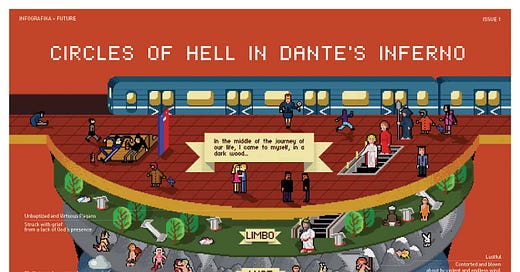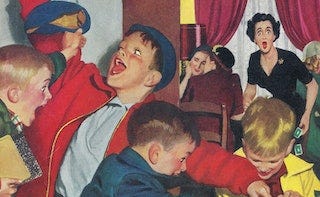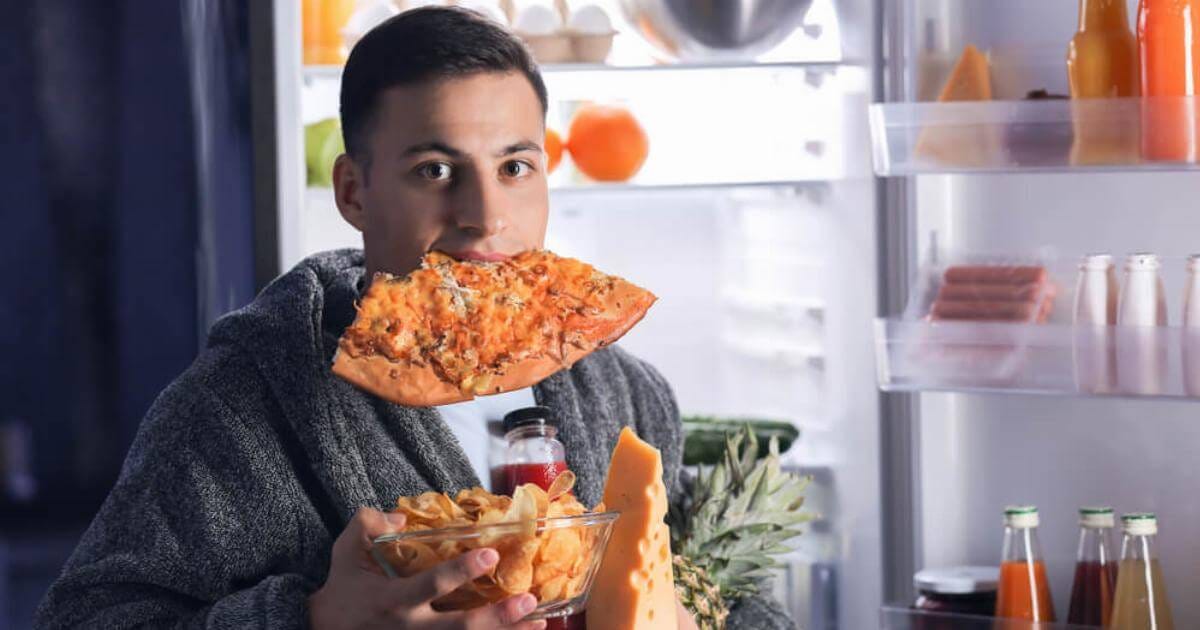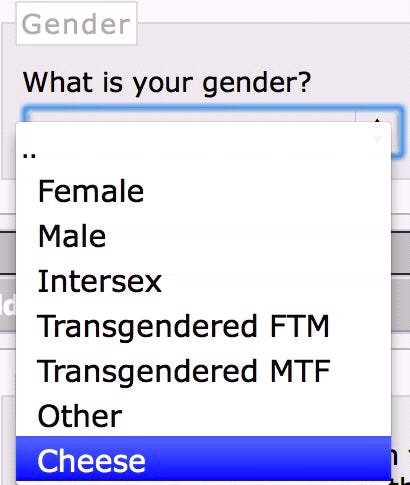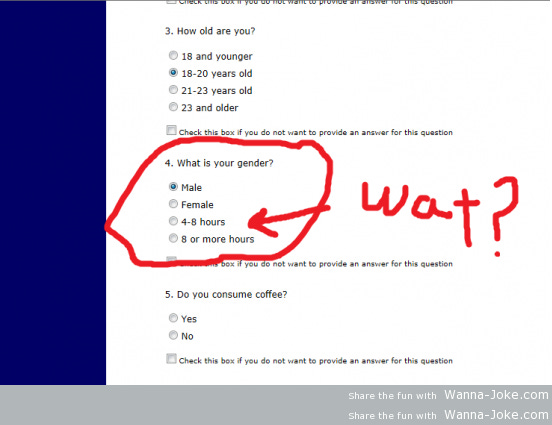Surviving Dante’s nine levels of (cherry-flavored) hell
Kid birthday parties, preschool mom groups, gatherings of cishet-normative parents, and me at the table with (all) the snacks
The very first kid birthday party I recall with any clarity was for my oldest child’s first birthday. It was a big deal. He was turning one, and my wife and I had made it through a year of being parents. That’s worth celebrating. We strapped him into his high chair and let him claw his way through a slice of chocolate cake with bare hands. The other families with babies were similar, still in diapers, still getting over the lack of sleep and the business of having little ones to manage. It was cute and fun, and it ended early enough that everyone could make it home for naptime.
That was the end of the fun.
Birthday parties turned into nightmares after that.
I have vivid memories of so many gatherings where I was the other: Birthday parties, New Year’s parties, holiday parties, Halloween trick or treating. They all put me in the same place, which was at the snack table.
Let’s set the scene.
I love my own kids, but other people’s children give me a headache. They’re loud, they’re unruly, they intentionally slam their bodies into my dishwasher while I’m actively telling them to stop it. They grind Cheetos and Doritos and Fritos (is there another -ito snack?) into the carpet with their tiny, obnoxious feet. They terrorize the dogs if I don’t hide them in the laundry room. They stop up toilets with kitchen towels and pillows and apparently anything made of a soft fabric because (I really don’t know why) maybe their parents prohibit such things and they feel a sense of freedom in a stranger’s house? And these instances haven’t just happened at my place, they happen at all of these parties.
Moms love to gather and chat. They’ll each pose with a soda can or a glass of wine in one hand, a snack in the other (or possibly a napkin to wipe at the face of the screaming child running past). And they never run out of things to share with each other. I know because I’ve listened to so many of those conversations from the outside. But if I try to step in, I get these looks like, “Hey, I know you, but I’m not sure you belong in this chat.”
The moms always knew I wasn’t one of them. It didn’t matter that I’d birthed both of my children or that both kids called me Mama back then. None of that made me fit with the collective.
Dads are another creature altogether. And sometimes I’d wander over to their little huddle, hopeful that they might not turn me away. Talk between them was often about sports (boring), but sometimes it turned to things like home repair.
“Yeah, I tried looking at the main panel in the garage, but I was afraid to yank that old breaker without calling an electrician. I couldn’t even figure out where the neutral wire was supposed to go.”
“Oh,” says another dad, “you just plug the black ones and white ones into like… different sides of the breaker I think.”
“No,” I step up cautiously, “there’s a bar on one side for the neutral wires and another one for the ground wires. And you really shouldn’t mess with your panel if you’re not comfortable with that kind of thing.”
This is the point when all of the men – collectively – stare at me like I have three heads.
Let’s break for a minute.
My wife and I used to be an openly gay couple. We were out, we didn’t hide it, and we discussed it freely. But we never found a queer community to be part of, and we were often the only gay couple with young kids in our circle of friends. We were accepted, and my wife, especially, was welcomed with genuine warmth into the mom crowd.
I was presenting as female. But I was female in men’s jeans, men’s shirts, men’s shoes. I’m the working parent; my wife stays home with the kids. Home repair? That’s me. I was a bicycle mechanic years ago, I’ve done light carpentry, I’m skilled in gardening and landscaping. I’ve changed out car tires in sloped gravel lots, wrangled bees bare-handed, knitted an arsenal of sweaters for my kids, and nursed tiny day-old chicks back to health. I like doing things, and I’m not afraid to try something new, even with heavy machinery. But I did all of those things with long hair, a soft face, and a body that screamed female no matter how hard I tried to hide it. I was a walking conflict, a mixed message.
I didn’t fit in the mom box, and no one would let me into the dad box.
Ranch dip for the win
My solution to all of the social events that sorted the crowd into binary roles was to find the snack bar. Veggie straws, chips, popcorn, cookies, candy chocolate, trail mix, juice boxes, cans of beer, anything to take my mind off the discomfort of not fitting in with the crowd. And while I was at it, I padded my too-feminine body with extra weight. It wasn’t about hiding those curves, it was the mental and emotional escape of having something, anything to fill me up when I was craving contact and conversation and community and friends. It was a technique I’d honed for years.
I’m not alone in this. In one recent study, it was found that transgender college students were more than four times as likely to be diagnosed with an eating disorder than their cisgender female peers.1 In fact, another study found that genderqueer and gender-diverse college students reported the highest risk of eating disorders (38.8%) in contrast to all other peer categories.2
Body dissatisfaction is characteristic of gender dysphoria and can contribute to the development of an eating disorder.
Both eating disorders and gender dysphoria tend to begin during adolescence, with puberty as a possible precipitating factor.
The psychopathology underlying eating disorders may differ in gender-diverse patients, compared with cisgender female patients.
Transgender patients can use disordered eating behavior as a coping mechanism, even when the behavior is not related to body image dissatisfaction.3
Not all eating disorders are about losing weight or looking smaller. It’s more complicated than that. And my troubled relationship with food started when I was a kid. The longer I went through life with my identity suppressed (oppressed and repressed), the more I took it out on my physical body. Transgender and gender-diverse folks tend to have higher rates of anxiety and depression as well as greater risks for suicide and self-harm behaviors. My behavior was self-destructive.
But it all came from a place of not belonging
Maybe you’ve been to a birthday party for toddlers. Maybe you’ve cringed when some kid mashes mustard into your laptop keyboard (real event) or yelped when you saw one of them heading for the dog with a pair of scissors in hand (real event prevented). But once things settled down, did you have a group to belong to?
Did you converse with the moms about laundry and part-time jobs, about wanting your husbands to pitch in more without being asked all the time?
Did you go over the big game with the other dads, sharing a microbrew from your favorite local brewpub and discussing the challenges of balancing work and staying awake once you got home from your commute?
Or were you standing at the snack table with me?
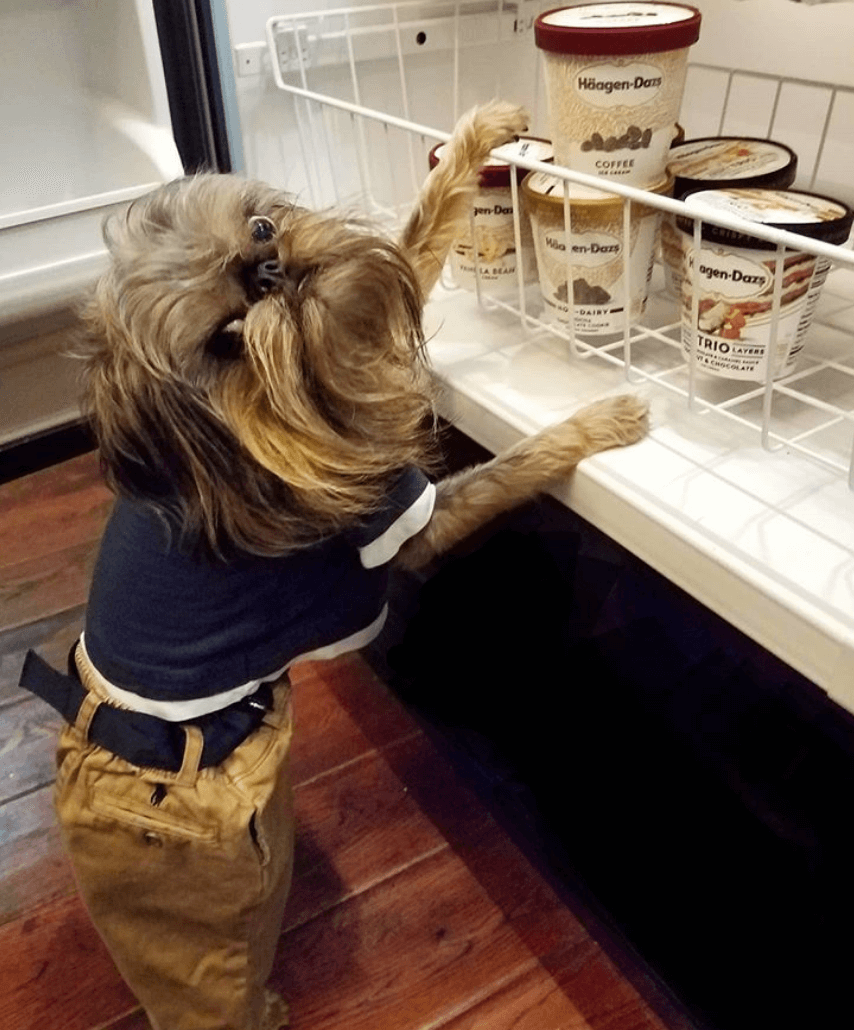
Now
The pandemic gave me several gifts, but one of those was an end to birthday parties! I cannot express how happy that made me. Pre-coming out, I was still in a state of bliss with each drive-by birthday car party my wife took the kids to, even if she stuffed me in the car, too. Gone were the awkward groups, the vegan, gluten-free, flavor free, made-of-wet-sawdust cakes, the little bag of plastic party favors that are just junk made to end up in a landfill. Gone were the shrill voices of sugared-up children, the disappointing coolers full of only cherry-flavored alcoholic sodas. Gone was the pressure. Gone was the need to pretend.
Oh, the parties came back once we all got over our abject fear of getting covid, but by then I’d already confessed to my wife how much I hated them. Having gone off with the other women at every single event, she had no idea I was so miserable. It was only the first of several shocking confessions for her to face. She took over, like a champ, and the only parties I’ve been subjected to since are the ones we’ve had in our own home or backyard.
But
It's still tangled. I’m out as a transman to everyone, all the friends, the coworkers, even extended family in other countries. And it’s clear that no one quite knows where that puts me. They can acknowledge that I never really fit in with the women, uterus be damned. But am I in the boy’s club?
Yeah, the nonbinary thing.
My wife and I had some pretty tense discussions about parental titles for me after my revelation that “Mama” made me uncomfortable. But “Dad” felt a little… Gosh, I don’t know. Not right? Too binary? Definitely too traditional in ways that I wasn’t / we weren’t / neither of us had never been. There’s a certain comfort in knowing that you’re non-conforming. We were always the gay couple, the queer family, “the girls” to our gay male friends. And I’d shifted that out from under us with my honesty about not being a girl. Were we suddenly a mom and a dad with two kids, two dogs, a mortgage, and a Suburban in the driveway?4
Whoa.
We took this title debate off to our kids with a couple of guiding ideas, and they grabbed on with no concerns at all. They tried out various names for me, and within an hour they’d stuck to “Poppy” (which I prefer to spell Papi) and never looked back.
I haven’t tried hanging with the moms or dads yet. Don’t ask where I’ll fit in because I have no answer. Maybe yes. And no. At the same time. But I’m still not drinking cherry-flavored anything.
My kids refer to me as their dad in conversations with people outside our family, and that’s getting more natural to hear. I didn’t expect to like it, but it’s growing on me. This whole thing about being a guy but also being in between is hard to manage, so I stick with what’s comfortable when I find it. And when I can’t find it, I come here to write instead of visiting the snack table. I haven’t completely fixed my relationship with food or eating or my body, but I’m working on it.5
Your trans friend,
Robin
The Role of Gender Dysphoria in the Development of an Eating Disorder, Banasiak, September 2022, The American Journal of Psychiatry (https://ajp.psychiatryonline.org/doi/10.1176/appi.ajp-rj.2022.180104#:~:text=Gender%20dysphoria%20is%20a%20disorder,disordered%20eating%20behaviors%20(2).)
Variability in eating disorder risk and diagnosis in transgender and gender diverse college students, Simone, Hazzard, Askew, Tebbe, Lipson, and Pisetsky, June 2022, PubMed (https://pubmed.ncbi.nlm.nih.gov/35472489/)
Key points from Banasiak, September 2022 (https://ajp.psychiatryonline.org/doi/10.1176/appi.ajp-rj.2022.180104#:~:text=Gender%20dysphoria%20is%20a%20disorder,disordered%20eating%20behaviors%20(2).)
And that’s where you grab the loose thread at the edge of the sweater and start pulling until your entire wardrobe unravels around you.
For real, have you tried the dark chocolate Oreos?


